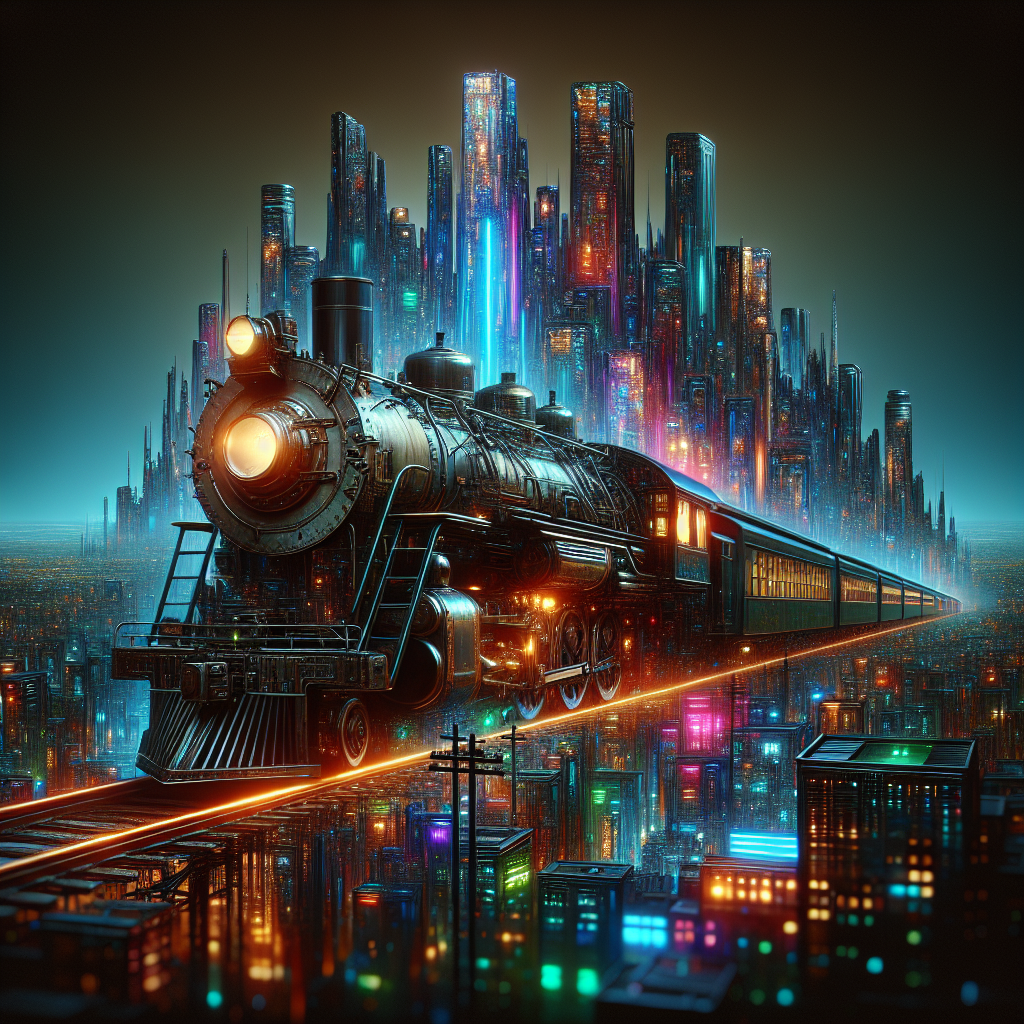Deep Dive into Generating AI Imagery: Exploring the Potential and Pitfalls
Artificial Intelligence continues to revolutionize countless fields, from healthcare to entertainment. One area where AI has made significant strides is in generating imagery. The third-generation AI models (Gen 3) are at the forefront of this innovation, promising to produce sophisticated visuals based on textual prompts. This article explores the dynamics, challenges, and potential improvements in AI-generated imagery, inspired by a live stream that delves deep into these generative models.
The Potential of AI-Generated Imagery
AI's ability to turn text into visually rich images has opened up new avenues for creativity and functionality. The Gen 3 models significantly enhance the image generation process, capturing intricate details and dynamically morphing elements. For instance, a user in the live stream generated an impressive image of a Colonial Explorer in 18th-century attire walking through a dense jungle. The AI even managed to create a gigantic lemon statue amidst the foliage, showcasing its capacity to handle complex prompts.
The real beauty of these models lies in their interpretation capabilities. They can produce images that mimic real-life aesthetics or fantastical elements, as demonstrated by the generation of a geologist with a bionic arm extracting gold in a cyberpunk world. The texture, environment, and overall composition reflect a futuristic, dark, foggy setting. Such advancements hint at a future where AI can assist in creating immersive environments for video games, simulations, and more.
Challenges and Limitations
Despite its promising potential, AI-generated imagery is not without its challenges. One notable issue is the AI's sensitivity to prompts. For example, a prompt like "Jesus playing basketball against the Devil" resulted in a somewhat incoherent image, with morphing issues and unclear visual representation. This highlights the need for specificity and clarity in prompts to guide the AI in producing desirable outcomes.
Another significant limitation is the difficulty in generating footage of famous characters or realistic human forms without glitches. The live stream host mentioned that attempts to create images of George Washington or other well-known figures often resulted in unintended and distorted outputs. This constraint is particularly troubling for applications requiring recognizable and accurate human representations, such as historical documentaries or biographical content.
https://www.youtube.com/watch?v=mksEAr6MRc0
Enhancing Prompt Specificity
One critical takeaway from the live stream is the importance of crafting detailed and specific prompts. When users provided more granular details, the results improved markedly. For instance, a prompt that described a "realistic man in a suit with a lemon for a head walking through Time Square" resulted in a fairly accurate depiction, with city elements and human reactions captured aptly by the AI.
Providing visual and contextual details enables the AI to better understand and generate the desired imagery. A prompt like "a 90s footage of Tokyo with few people, retro colors, slight visual glitches, and minor noise" generated an image that authentically captured the retro aesthetics of the '90s Tokyo scene. This underscores the importance of visual storytelling when working with AI models to achieve superior results.
For a detailed guide on how to craft effective prompts, you might find this article on prompt engineering useful.
Addressing Morphing and Realism Issues
One recurring issue in AI-generated images is the presence of morphing artifacts, especially in human figures. This often leads to distorted and unrealistic outputs, which can detract from the image's overall quality. In the live stream, for instance, an attempt to generate VR horror game footage showcased an asylum setting with noticeable morphing issues in the background elements.
To mitigate such problems, iterative prompting and continuous refinement are essential. By testing and tweaking prompts based on the initial output, users can gradually improve the image quality. For example, a user refined a prompt about a geologist in a cyberpunk mine by specifying camera movements and environmental details, resulting in a markedly enhanced image.
Practical Applications and Future Directions
The practical applications of AI-generated imagery are vast and varied. From creating dynamic video game environments to assisting filmmakers and artists in visual conceptualization, the possibilities are endless. Gen 3 models, with their advanced capabilities, can significantly reduce the time and effort required to produce high-quality visuals.
However, continuous improvements are necessary to refine these models further. Enhancements in training data, prompt interpretation, and handling complex visual elements will be critical. As the technology evolves, we can anticipate more seamless integration of AI-generated images in creative and functional domains.
For further insights into the impact of AI in visual arts and entertainment, visit this comprehensive resource.
The Journey Ahead
The exploration of AI-generated imagery is an ongoing journey filled with both excitement and challenges. While current models like Gen 3 have shown remarkable potential, there is still a long way to go in achieving flawless and highly realistic outputs. Engaging with these models requires a blend of creativity, precision, and iterative feedback. As seen in the live stream, the interaction between human creativity and AI capabilities can lead to truly spectacular results.
In conclusion, the evolution of AI-generated imagery is an exciting frontier in the world of artificial intelligence. With continuous advancements and user engagement, there is immense potential to push the boundaries of what these models can achieve. Whether it's for entertainment, education, or artistic expression, AI-generated imagery is poised to play a significant role in shaping the visual landscapes of the future.
In the meantime, as users and developers refine their approaches and push the limits of AI capabilities, we can look forward to a world where the line between imagination and reality continues to blur, driven by the power of artificial intelligence.
Related News
- The Thrilling Week in AI: Luma AI, Stable Diffusion 3, and Beyond
- The Exciting Evolution of AI Image and Video Generation: A Deep Dive
- Unveiling the Realism: The Evolution of AI-Generated Imagery
- Navigating the Ever-Evolving Maze of AI: A Deep Dive into Current Progress and Potentials
- The Revolution of Real-Time AI Image Generation: An In-Depth Analysis
